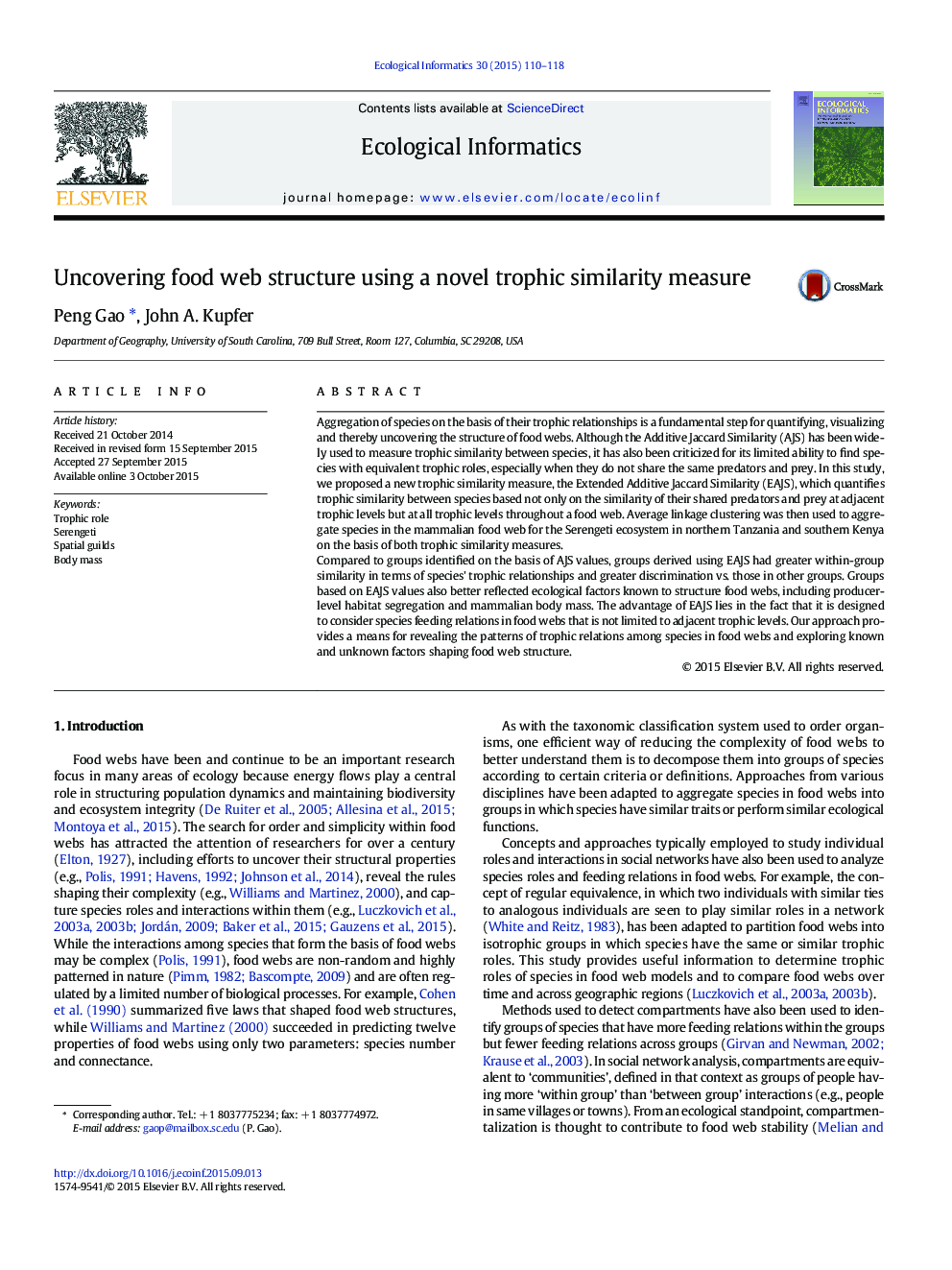| Article ID | Journal | Published Year | Pages | File Type |
|---|---|---|---|---|
| 6295810 | Ecological Informatics | 2015 | 9 Pages |
Abstract
Compared to groups identified on the basis of AJS values, groups derived using EAJS had greater within-group similarity in terms of species' trophic relationships and greater discrimination vs. those in other groups. Groups based on EAJS values also better reflected ecological factors known to structure food webs, including producer-level habitat segregation and mammalian body mass. The advantage of EAJS lies in the fact that it is designed to consider species feeding relations in food webs that is not limited to adjacent trophic levels. Our approach provides a means for revealing the patterns of trophic relations among species in food webs and exploring known and unknown factors shaping food web structure.
Related Topics
Life Sciences
Agricultural and Biological Sciences
Ecology, Evolution, Behavior and Systematics
Authors
Peng Gao, John A. Kupfer,
